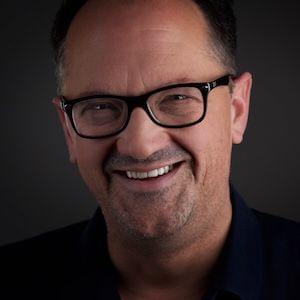In this podcast, we have the honor of interviewing Chris Williams, founder of Badass Agile and a leading figure in agile leadership in Canada. Chris is an innovator who drives leaders and teams to adopt an agile mindset in all areas of their lives and organizations.
In this episode, we talk about antifragility and discuss how leaders can transform their organizations to thrive in the face of adversity, adapting not only to changes but also benefiting from them (english interview 😉).
Chris, thank you very much for being with us today. Could you briefly introduce yourself to our audience and share how you connected with the concept of antifragility?
Of course. My name is Chris Williams, and I’m the host of the Badass Agile podcast. I've been in the technology field for about 30 years, and I've held roles ranging from developer and architect to consultant and coach. Initially, I found agile work challenging, but over time I began to appreciate it, becoming a Scrum Master and agile coach. Along the way, I started studying patterns of success, including the habits of elite teams like the Navy SEALs. I became fascinated with resilience in high-risk situations, which led me to study and teach resilience. Eventually, this brought me to the concept of antifragility, which is about how some people and organizations thrive in adversity and come out stronger.
Instead of just resisting stress, antifragile systems become stronger under pressure. From your experience, what elements are essential for a company to become antifragile?
Well, if we’re talking about an organization, the first thing is to embrace challenges, evolution, and uncertainty. Antifragility is based on a concept from Nassim Taleb’s book, which says it’s not enough to simply withstand difficulties; you have to strengthen from them. Companies must be willing to take risks and make mistakes, as these are essential for growth. Additionally, there needs to be trust between teams and leadership, creating a culture where, if someone fails, they don’t face serious repercussions, and where teams feel they can innovate without fear.
With your experience, you’ve worked extensively with leaders who embrace agility. How do you view the concept of continuous improvement in an environment that prioritizes antifragility?
Agile teams have great potential to be antifragile due to their focus on continuous improvement and learning from mistakes. We’re not just testing for success; we’re also pushing the limits of the system. I think teams that practice agility and adopt an antifragile approach can tackle challenges powerfully. For example, in retrospectives, teams should be willing to address the uncomfortable areas for improvement.
What are your thoughts on creating a culture that not only tolerates but values disruption?
Great question. Many companies have made visible mistakes and still learned from them. SpaceX, for example, doesn’t fear rocket explosions, because analyzing failures makes them stronger. If an organization tries to control every move of its teams, it stifles innovation. We need to allow some freedom to experiment and learn from failures. The best way to improve is by testing and observing, not by planning every detail.
Let’s talk about empowered teams and decentralized decision-making. Can you share successful examples where this has accelerated change?
When I’ve worked with large companies, I’ve seen some that create innovation areas and allow their employees to suggest ideas, even risking up to $100,000 on these projects. This controlled investment in employee ideas helps to identify opportunities and adapt to the market faster. This is how organizations can experiment safely and respond quickly to market changes.
Many organizations talk about diversity of thought as a competitive advantage. How can leaders foster that diversity without it feeling like just another corporate initiative?
Diversity initiatives are challenging, but they start with listening to different perspectives. The most interesting innovations often come from combining elements that have never intersected before. That’s why diversity within companies allows them to discover innovative approaches. It’s essential to foster an environment where all ideas are valued equally, and each individual in the team is recognized.
Chris, you mentioned the importance of creating a safe environment for teams to learn from mistakes. How can leaders foster an environment where failure is safe and productive?
A good leader should recognize that big ideas don’t arise immediately. Innovation needs space to fail and learn. If we impose expectations of perfection, teams will hesitate to experiment. On the other hand, if we offer an environment where failure is allowed and learning is recognized, we’ll see significant improvements in innovation. The key is to minimize the consequences of failures while learning from them.
We have leaders in our audience who want to make their organizations antifragile. What would be the first practical steps you would recommend?
I recommend starting with small experiments and looking for people within the company who are willing to take risks. These people, who are already comfortable with change, will be the first to adopt an antifragile approach. Also, it’s essential to limit experiments to specific areas so as not to risk the entire organization. It’s like doing simulations to prepare, like first aid exercises: we can’t learn in stressful situations without some preparation.
Chris, if you had to give advice to a leader who is unsure about embracing antifragility, what would you say?
I would say to challenge yourself to do something that makes you a little uncomfortable each day. Maybe talk to someone new, or give a presentation. Facing these small challenges helps build confidence and makes it easier to accept antifragility. This daily practice of overcoming discomfort is powerful and creates a solid foundation for facing bigger challenges.
Comments are moderated and will only be visible if they add to the discussion in a constructive way. If you disagree with a point, please, be polite.







Tell us what you think.